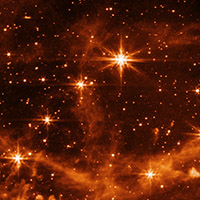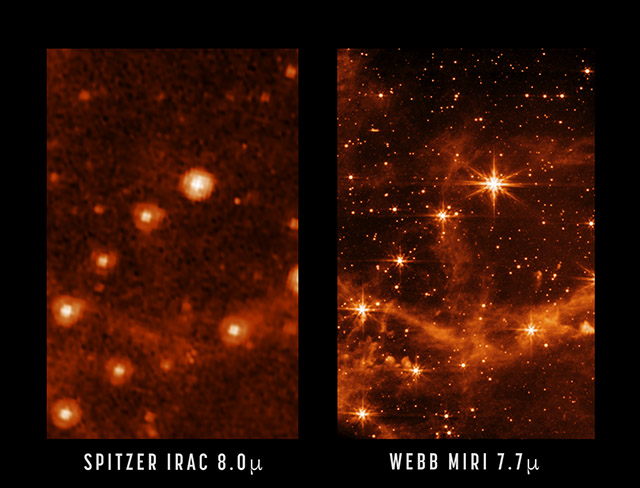James Webb Space Telescope’s MIRI instrument captures an incredible, sharp photo of Large Magellanic Cloud
posted Wednesday, May 11, 2022 at 5:00 AM EST

Just a couple of weeks after NASA announced that its $10B James Webb Space Telescope was fully aligned, NASA has shared a closer look at an image captured by Webb's Mid-Infrared Instrument, also known as MIRI. While Webb's instruments are still going through setup and testing, and full scientific operations aren't expected to begin until this summer, the test shot shows the incredible potential of Webb to provide clearer, more detailed views of deep space and further our understanding of galaxies, stars and our entire universe.
The Mid-Infrared Instrument (MIRI) covers the wavelength range of 5 to 28 microns. It sees wavelengths well beyond the visible spectrum, allowing it to resolve additional details in space. NASA writes that MIRI's "sensitive detectors will allow it to see the redshifted light of distant galaxies, newly forming stars, and faintly visible comets as well as objects in the Kuiper Belt. MIRI's camera will provide wide-field, broadband imaging that will continue the breathtaking astrophotography that has made Hubble so universally admired."
MIRI photographed part of the Large Magellanic Cloud at 7.7 microns. NASA's retired Spitzer Space Telescope's Infrared Array Camera also captured an image of the same test target at 8.0 microns. It's incredible to see the difference between the two images.

NASA writes that Spitzer "was one of NASA's Great Observatories and was the first to provide high-resolution photos of the near- and mid-infrared universe." Thanks to Webb's much larger primary mirror and improved detectors, we can see infrared space with much greater clarity, which will provide the opportunity for many discoveries.
NASA continues, "Webb's MIRI image shows the interstellar gas in unprecedented detail. Here, you can see the emission from 'polycyclic aromatic hydrocarbons,' or molecules of carbon and hydrogen that play an important role in the thermal balance and chemistry of interstellar gas. When Webb is ready to begin science observations, studies such as these with MIRI will help give astronomers new insights into the birth of stars and protoplanetary systems."
There's no doubt that there'll be many more incredible images when the James Webb Space Telescope commences scientific observations this summer.